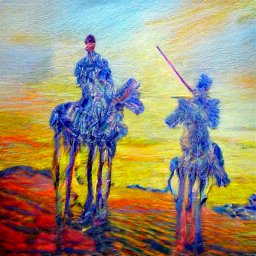Don Quixote: Expectations and Reality
August 2022

Don Quixote is one of the most famous novels ever written. You can even say it was the first modern novel, especially if you ignore all of the other novels that came before it (e.g. The Tale of the Genji). Though I only read the novel recently, it seems like I have always been aware of it. Prior to actually reading the novel, I tried to think about what I knew of the novel. My knowledge came solely from popular culture and seemed limited to the phrase “tilting at windmills.”
I knew our eponymous hero falsely believed himself to be a knight existing in a world of fantasy. At some point he mistakes windmills for giants and is subsequently defeated by them. It is surprising that despite all of the references in popular culture, all I picked up was a metaphor for wasting energy on a imagined problem. I guess I also knew he had a squire named Sancho that rode a donkey, but that is not a particularly insightful piece of trivia.
After reading the novel, what did I learn? The novel is engaging and hilarious. It is not some dusty old tome that has no value for a modern audience. It is entertaining, but also deeply thought provoking. Many aspects of the novel were surprising. The novel also contains the earliest example of a friend asking someone to test the fidelity of his wife by trying to woo her that I have ever seen.
The most surprising aspect for me was the meta-aspect of the novel. First, the conceit of the novel is that it is a translation from another author. We sometimes have comments from the original author, but then also comments from the imagined translator. The second half of the novel was published many years after the first. Cervantes, through the imagined translator, addresses many of the criticisms that were levied against the first part. For instance, there is some confusion in the first part where Sancho’s donkey disappears and then later reappears without explanation. The second part takes the time to explain this issue and other confusions.
The first part also contains long digressions that are essentially novellas inside the main novel. Apparently some readers did not appreciate the side stories. Such digressions do not appear in the second part and it is directly addressed in the second part with the statement,
And so in this second part he did not wish to introduce any novels, whether detached or attached.
Finally, the first part exists within the world of the second part. As Don Quixote is travelling, he encounters people who are familiar with him because they have read the first part. Prior to the publication of the second part, a fake second part was published. This fake novel also exists. The characters discuss both novels and they impact the story.
Despite his perception in popular culture, Don Quixote is not just some clown figure for our entertainment. While there is something fundamentally wrong with his perception of the world, he has a great heart and captures the admiration of many people he meets. His situation is more often pitied than ridiculed.